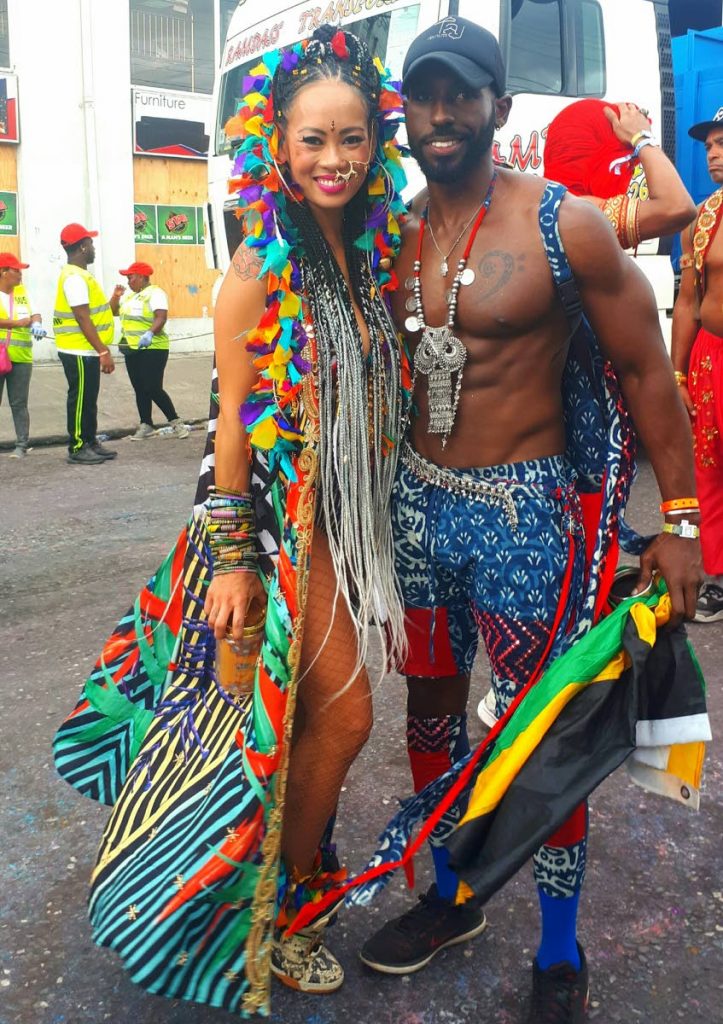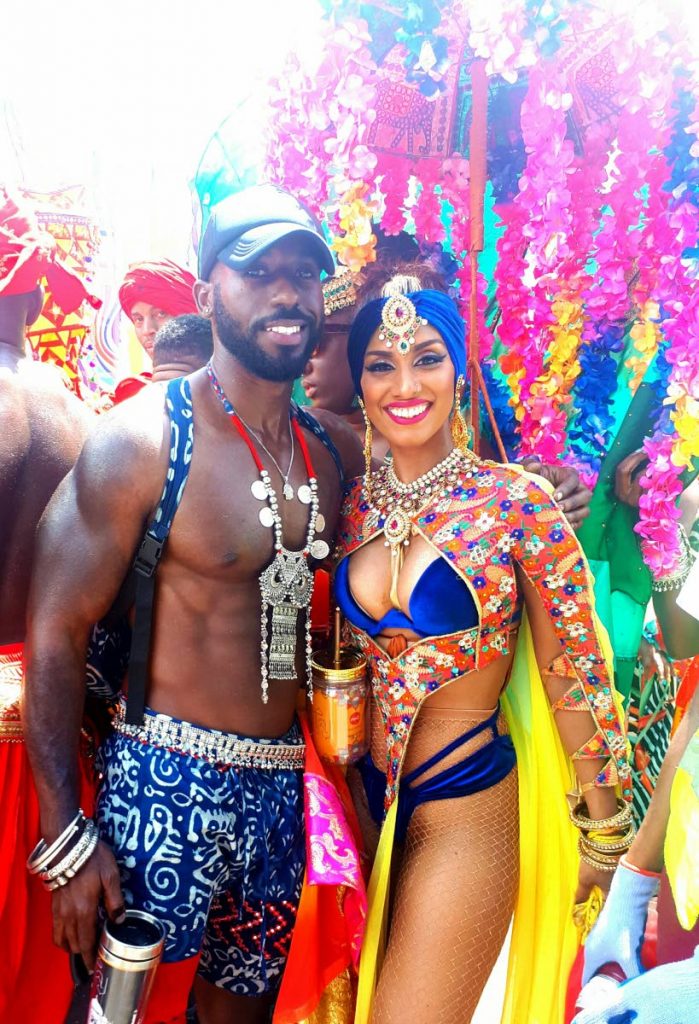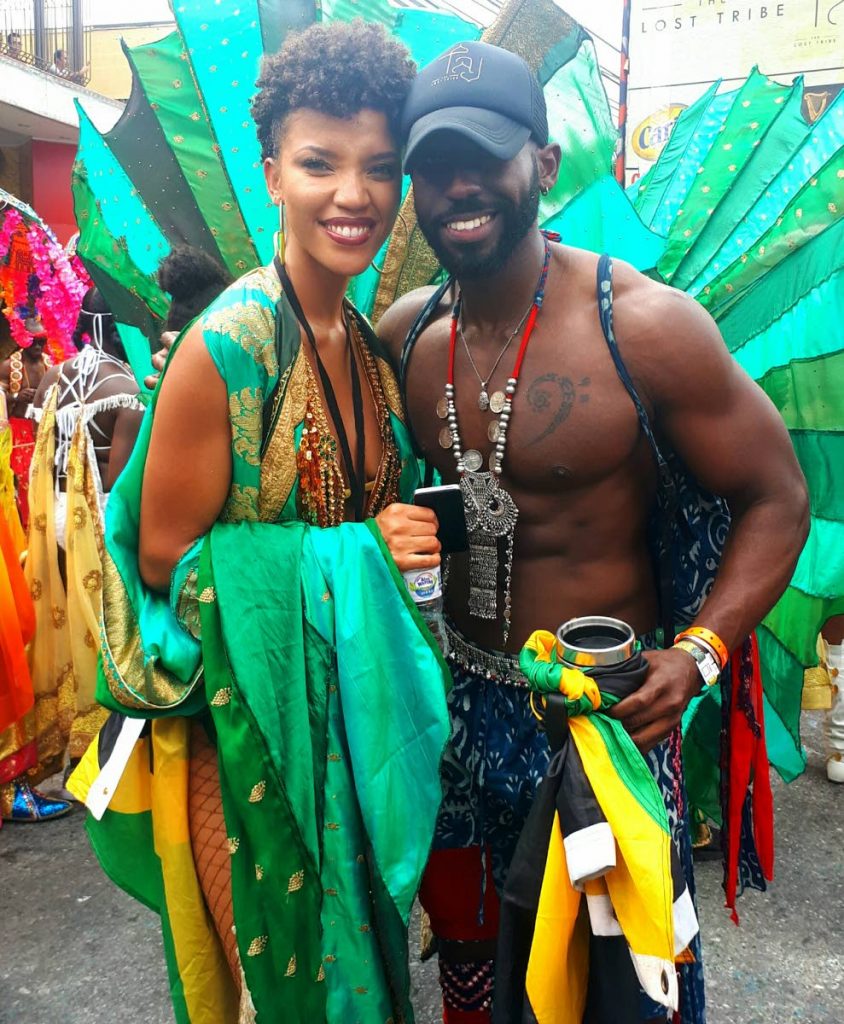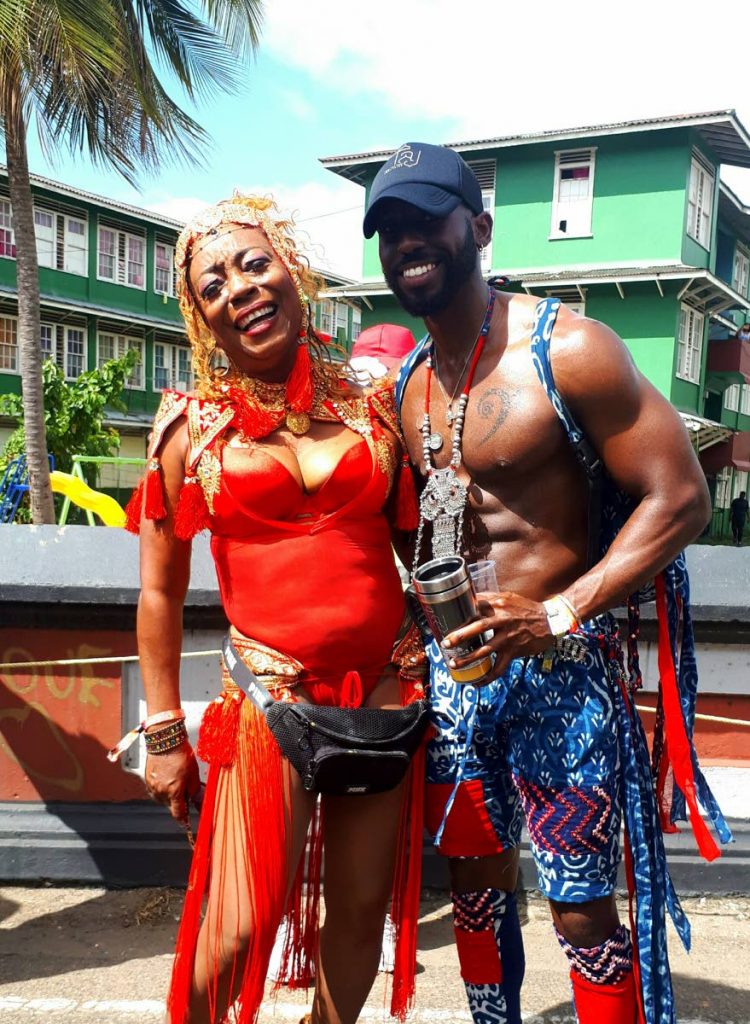Finding the Lost Tribe

Growing up, before I knew anything much about TT, I knew it produced the happiest genre of music I had ever heard and was the home of a carnival 10,000 times larger than Byron Lee's, which flooded the streets of Kingston.
Years before coming to TT, too, I heard of a new band created by a team of young artists. The ethos of this band was paying respect to the mas of old while infusing it with the aesthetics of the modern youth. After seeing its work, which managed to mix sophistication and classic style with a millennial touch, it became more evident how much this band's approach differed from most of what was available when considering a Carnival experience. As a writer, I was drawn to a band which seeks to tell a story – making social commentary while playing mas, the art of human movement through Carnival.

The embellished beads-and-feathers mas for women is in its own way aesthetically appealing. For me, wearing a pair of shorts was okay, because the experience is what mattered most. However, I thought it intriguing and most inviting that a group of young people would decide to do something that would seem left-field of the status quo. Towering backpacks, flowing fabric worn by women on stilts, mixing sexy with classic silhouettes, and men being given the option of wearing actual costumes created with deeper thought – borrowing pieces from the traditions of ancestors – made the call even stronger.
Fast-forward to band launch 2018, after seeing four years of costumes which clearly called upon deep creative processing, and watching countless YouTube videos showing how the Lost Tribe did mas, I was convinced it was bound to be an adventure playing mas with them. I looked forward to chipping through Port of Spain, being part of a sea of colours and textures all blended into one grand display, moving through the city in unison, in a similar way to those who had played mas with Peter Minshall's bands. It closely resembled what I had seen in videos from that era, in those days minus the rope used to keep outsiders out of the band.
The theme, Taj, was inspired by the Taj Mahal, the ivory-white marble mausoleum built on the south bank of the Yamuna river in Agra, India, by the Mughal emperor Shah Jahan in 1632, to honour his favourite wife, Mumtaz Mahal – a symbol of love. Each costume was inspired by lines pulled from ancient East Indian love poems and they were all made of fabric handpicked by the creative director of the Lost Tribe, Valmiki Maharaj, during a visit to India.

The costume I wore, Yamuna Nadi, was designed by Maharaj and Shandelle Loregnard and was inspired by the ancient love poem which says
Neelee bahti huee shantimaya yamuna ek boond e barsaat se choor choor ho jaati hai, which translates as: “A rain shatters the silent peace of the dark blue Yamuna...flowing, guilelessly on its own accord by the eroded banks of time, with waters that rise and fall, in silent obedience... ”
On both days, the energy in the band seemed unlimited in spite of the heat and Sahara dust, which on any other day would be miserable. Luckily I began hydrating days in advance, with about a gallon of water each day for three days leading up to the day before J'Ouvert. Drinking water between refills of my favourite scotch was a necessity to manage the heat and humidity. Being on the road for about 28 hours in total left my feet sore, but the music and energy of fellow revellers kept me going with excitement.
Of all the cultural events I've attended here, playing mas in the Lost Tribe was the one time I saw what seemed like equal numbers of youth and mature folk revelling in the same activity – and the mature players looked just as sharp as the millennials. I saw women who seemed as young as 20, to others as mature as their sixties looking confident in their costumes. Women of all shapes and sizes chipped through Port of Spain. Some costumes resembled bikinis; others had fabric added to let wearers make their outfits less revealing – but they managed to be flattering on every woman. Welcomed by the band's #MyCarnival inclusion campaign, many plus-sized women came out to play mas beautifully and tastefully.

I later had a conversation with a number of friends about people in the band seemingly wearing their costumes with pride, and how they effortlessly stayed within their sections. I felt it might have had something to do with how vastly different each section was in design, though of the same origin. I also thought maybe the knowledge of the thought and meaning behind each piece somehow earned a certain kind of reverence – as reverent as one can be in a mas.
Carnival 2019 in the Lost Tribe was an enchanting experience. Seeing people of all shapes, races, colours, sizes and approaches coexisting for two days in harmony was inspiring. It appeared to be a reasonably idyllic representation of TT captured in a Carnival band where everyone was welcome.
The costume, which survived my behaviour on the road, coupled with an exhilarating experience was worth every cent – over $4,000. Finding the Lost Tribe saw me even learning traditional Indian dance on the road from members of the Metamorphosis Dance Company, while jumping for the first time in Carnival with people three times my age. I look forward to seeing what the band will conceptualise next.

Comments
"Finding the Lost Tribe"